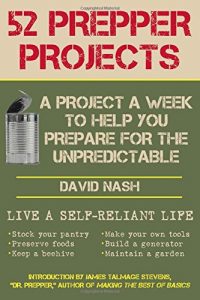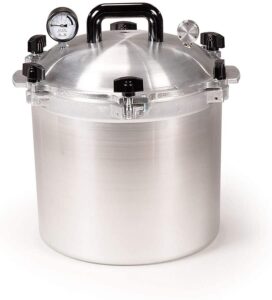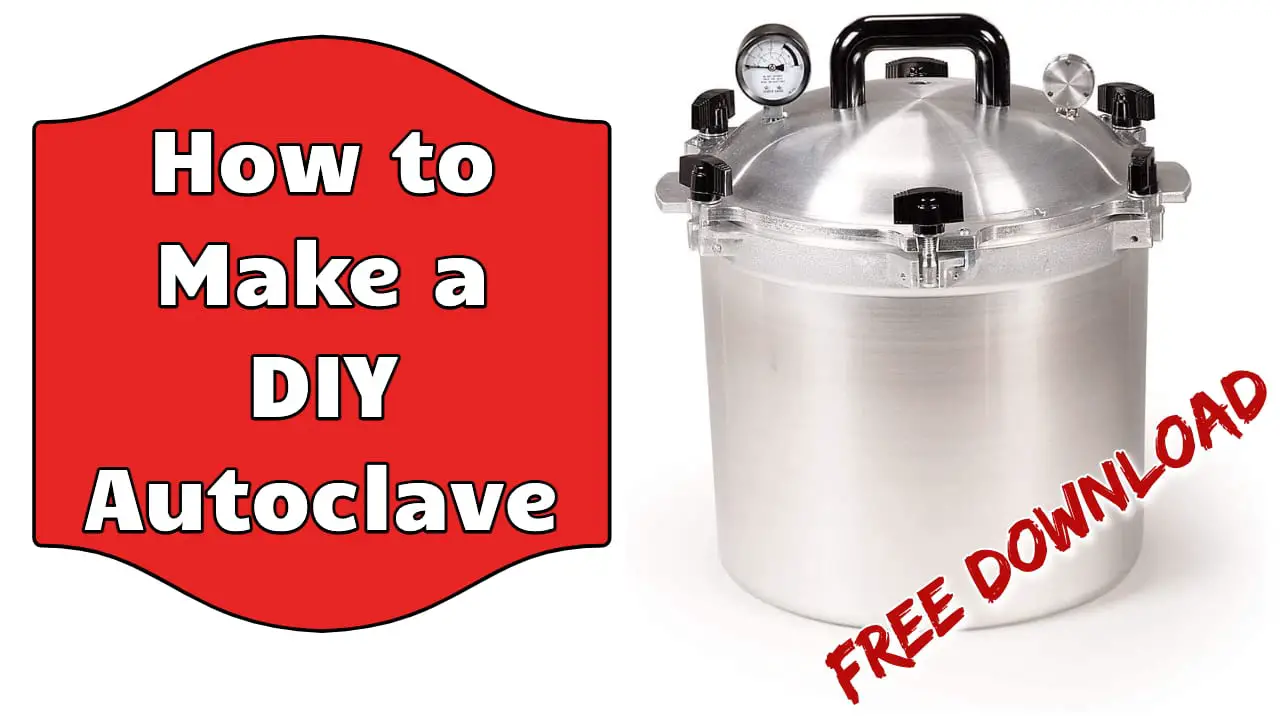

A pressure canner allows you to create very hot temperatures by adding heat to steam under pressure, this allows pressure canners to be used for all sorts of things.
In this post we will use it to sterilize equipment. An autoclave sterilizes equipment used in hospitals and doctor’s offices. While I am not advocating using this to sterilize equipment for home surgery. Being able to sterilize things (for brewing as an example) is very useful.
Be Safe
First, because you are using a pressure vessel you need to read your manual.
Next realize that pressure cookers are not designed to reach the temperatures necessary for complete sterilization. While I think it is a good process for ensuring you don’t contaminate your fermenting or brewing recipes with bad yeast. I would not trust it for medical equipment unless it was the last resort and I would die anyway…
You have to keep whatever you are sterilizing off the bottom of the cooker. Make a wire mesh bottom for the pressure cooker autoclave. A steamer basket also works.
A pressure cooker uses steam. Steam is what is doing the sterilization. Because of this, anything sitting in the water at the bottom of the pressure pot is not being sterilized.
What is Autoclaving
Autoclaving sterilizes glassware, metal equipment and instruments. Autoclaving kills organisms in biological waste. It does this by filling the container with steam at a high pressure.
The time in the high pressure steam is critical. At 15 PSI, a pressure cooker produces steam at 121 degrees Celsius. At this temperature and pressure, thermal death time for most bacteria is about 15 minutes. Although some microorganisms will be capable of surviving this treatment .
Only use laboratory-grade Pyrex (borosilicate glass) and stainless-steel materials only.
Additionally, you can also wrap utensils or the open tops of glassware in aluminum foil.
Remember, Mason jars are similar Pyrex. Never screw down the lid of any jar inside of an autoclave or pressure cooker. If you autoclave regular glass you also run the risk of having the glass explode.
How to Autoclave in a Pressure Cooker
- Place two cups of water in the bottom of the pot, then the support stand. Follow that with whatever you are needing to sterilize. Remember, you cannot sterilize something that is not clean.
- Next, Put the lid on and pressure cooked according to the manufacturer’s instructions for 15 minutes.
- Never leave the pressure cooker unattended.
- After the 15 minute sterilization time is up you should allow the pressure cooker to release the pressure by the slowest method possible.
- Finally, let the pressure cooker sit for an hour and a half. This is to let it come back to room temperature as slowly. Shock could break the glass inside.
Since we are talking about sterilization I wanted to give you a source for further study:
Sterilization of Surgical Instruments Using A Pressure Cooker
Wilfredo L. Mirasol, Jr., M.D.., Rizalino F. Felarca, M.D., and Napoleon B. Alcedo, M.D., Department of Ophthalmology, UERMMMC, Aurora Blvd., Quezon City
Purpose: To explore the utility of the pressure cooker as an alternative method for sterilization.
Methods: Sterile ophthalmic instruments were inoculated with known organisms and sterilized using either a Pelton and Clane Autoclave, immersion in gluteraldehyde, a gas-clave or a pressure cooker at 15PSI for 30 minutes. Samples were then cultured after the sterilization process.
Results: There was no growth of organisms in any of the groups.
Conclusion: Sterilization of ophthalmic instruments using a pressure cooker can kill common microorganisms as efficiently as the conventional methods.
Link to Journal Article
[sdm_download id=”73609″ fancy=”2″]
